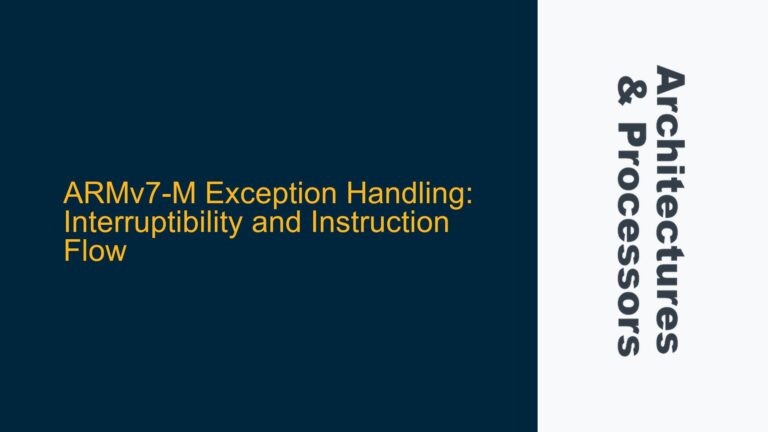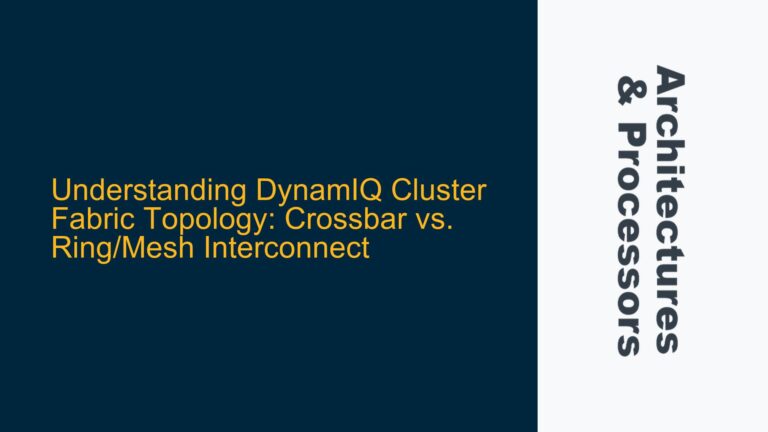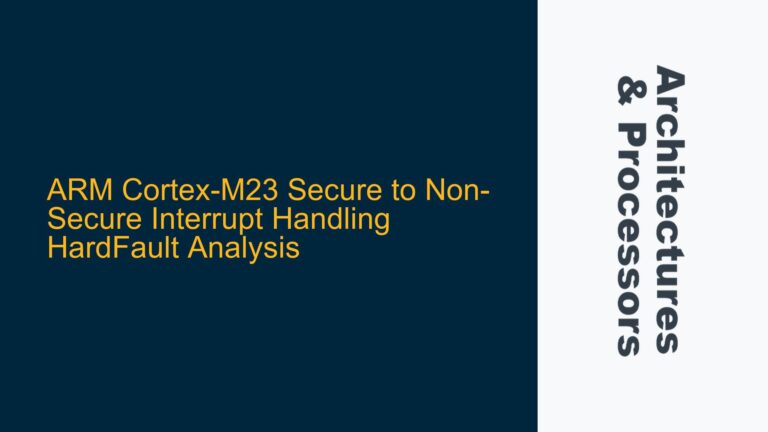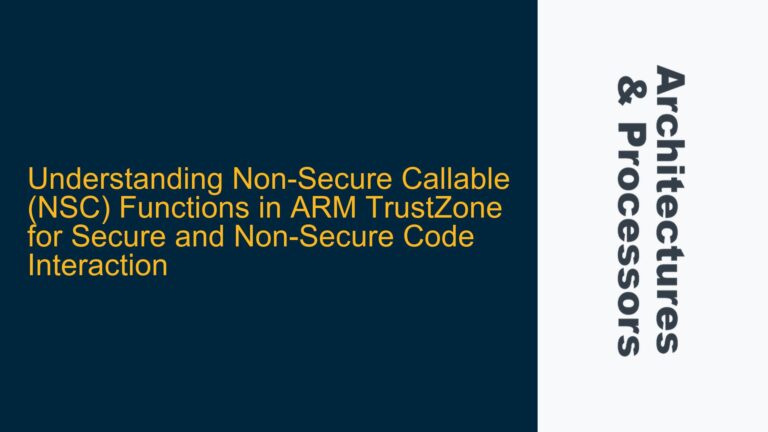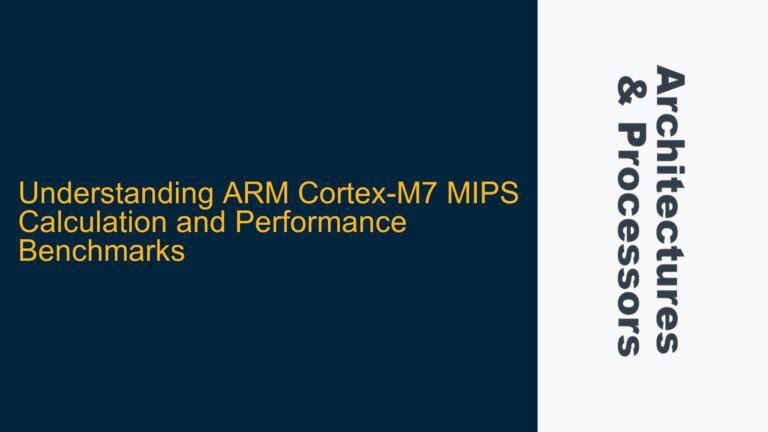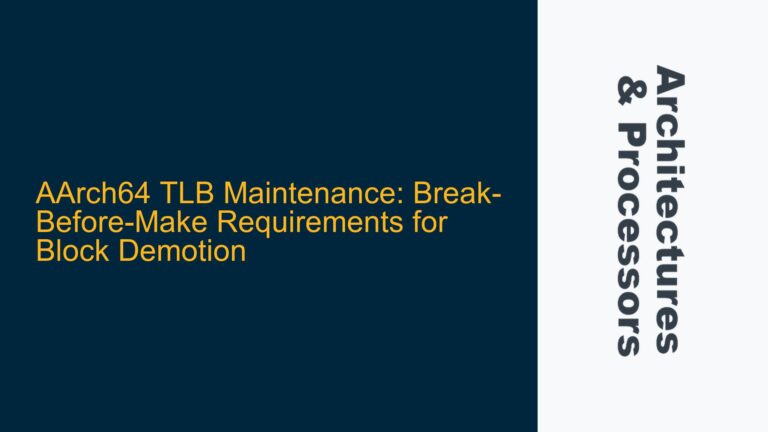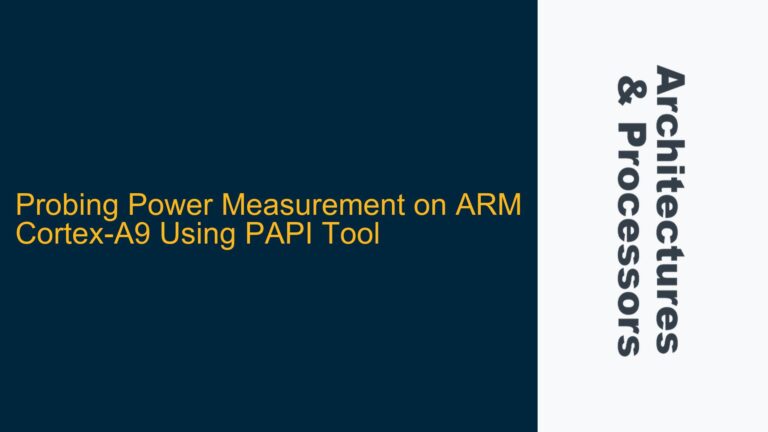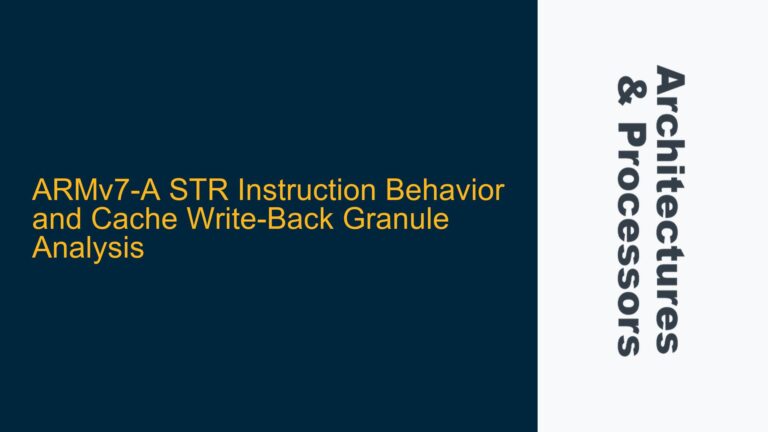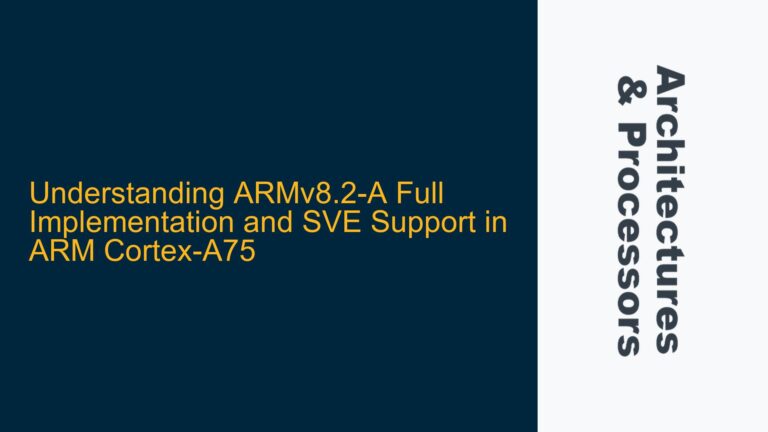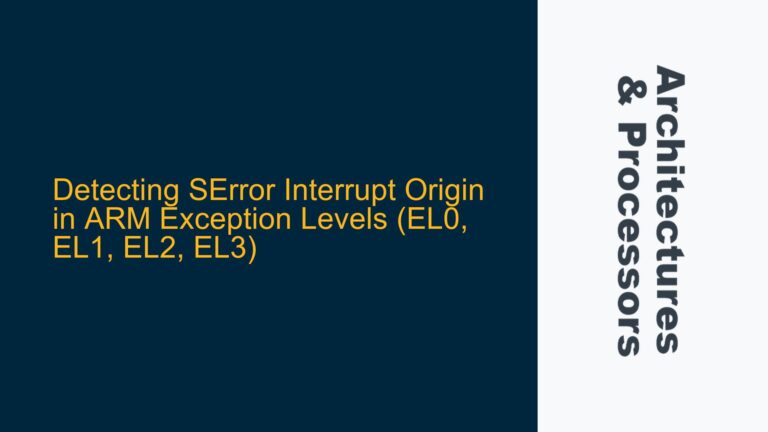ARMv7-M Exception Handling: Interruptibility and Instruction Flow
Exception Handling Timing and Instruction Interruptibility in ARMv7-M The ARMv7-M architecture, widely used in Cortex-M series processors, implements a sophisticated exception handling mechanism that is critical for real-time embedded systems. A key aspect of this mechanism is determining when exceptions are taken into account relative to the instruction flow. Exceptions in ARMv7-M can be either…
